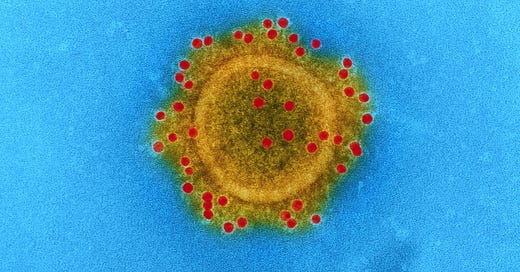80% of Deceased COVID-Infected Patients Are Vaccinated—Only 20% Are Unvaccinated: Journal 'Antimicrobial Stewardship & Healthcare Epidemiology'
"Hospital-acquired COVID-19 infections in omicron era were related to high mortality, especially among patients in medicine wards who also had good vaccination coverage," according to study.
A peer-reviewed study published last month in Antimicrobial Stewardship & Healthcare Epidemiology (ASHE) found a “high mortality” rate among those with hospital-acquired (HA) COVID-19 infections who also had “good vaccination coverage.”
“Hospital-acquired COVID-19 infections in omicron era were related to high mortality, especially among patients in medicine wards who also had good vaccination coverage,” the study authors confirm.
The study’s aim was to compare the incidence of HA coronavirus infections “after protection of vaccines and emergence of new variants” between different wards in Finland’s Helsinki University Hospital (HUH), including 18 secondary and tertiary care hospitals in an area of 1.8 million inhabitants.
Analyzing 177 HA COVID infections, the study authors discovered that among the portion of those patients who died, 80% “had received at least one COVID-19 vaccine.”
“[P]atients died in association with COVID-19 even though they were vaccinated,” they write.
This means that there was a significantly greater number of deaths among vaccinated COVID-infected patients than among unvaccinated patients.
In other words, the likelihood of dying from a COVID-19 infection was four times greater among the vaccinated than among the unvaccinated.
Similar Trend in Korea
The researchers noted a similar trend in Korea.
“HA COVID-19 patients had a similar mortality rate and vaccination status, with 78% of the inpatients having at least 1 vaccination,” the study reads.
Higher Mortality Rate in More-Vaccinated Wards
Significantly, the authors point out the highest mortality rate occurred in the most vaccinated ward.
Of the 177 patients, “71 (40%) were treated in medicine, 52 (29%) in operative, and 54 (31%) in psychiatric wards, leading to incidences of 0.51, 0.39, and 1.10 per 1,000 patient days, respectively. In association with COVID-19, 16 (23%) in medicine, 3 (6%) in operative, and 1 (2%) patient in psychiatric wards deceased.”
Patients in medicine wards “were even more often vaccinated” than those in operative and psychiatric wards, according to the study.
The authors underscore the “difference in the vaccination status between specialties, medicine patients being the most vaccinated group (92%), while a slightly smaller fraction of the operative (84%) and psychiatric wards (66%) were vaccinated at least once.”
The study was published online by Cambridge University Press.
Recent Studies Link COVID-19 Vaccine to Disease
Meanwhile, a publication in Vaccine X published this month confirmed serious cardiovascular, respiratory, immune, digestive, nervous system conditions “are associated with primary vaccination using COVID-19 mRNA vaccines.”
The study investigated data regarding the BNT162b2 (Pfizer-BioNTech/ Comirnaty) and mRNA-1273 (Moderna/ Spikevax) jabs.
Looking at vaccinated individuals aged 5 years and older through mid-September 2022, the authors identified safety signals for eight adverse events of special interest (AESIs) occurring within 42 days of vaccination: “strokes, cerebral venous thrombosis (CVT), acute myocardial infarction, myocarditis/pericarditis, pulmonary embolism, immune thrombocytopenia, convulsions and appendicitis.”
In another startling study published in Nature this month, researchers from the University of Cambridge’s Medical Research Council (MRC) Toxicology Unit uncovered a significant unintended immune response triggered by mRNA COVID-19 vaccines in approximately one-third (25-30%) of recipients.
The negative response was attributed to a “glitch” in how the body interprets the vaccine’s genetic instructions.
The study found that the cellular machinery responsible for interpreting mRNA—the messenger ribonucleic acid, a crucial component in these vaccines—often misreads the sequence due to a chemical modification found in mRNA therapeutics.
This modification component, known as N1-methylpseudouridine, causes the ribosome, the protein-making machinery in the body, to “slip” around 10% of the time.
The misstep can cause a momentary pause, akin to a bike slipping a gear, leading to a process called “frameshifting.”
Frameshifting disrupts the way the genetic code is read, as it depends on groups of three bases, or codons, being read in sequence.
Consequently, the entire subsequent code becomes garbled.
In the context of COVID vaccines, this issue translates into the production of a protein that the body identifies as foreign, resulting in an immune system response.
In other words, the slippage leads to the production of unintended “rogue” proteins, enough to elicit an immune system “flare-up” response in which the body “attacks” the proteins it has made.




